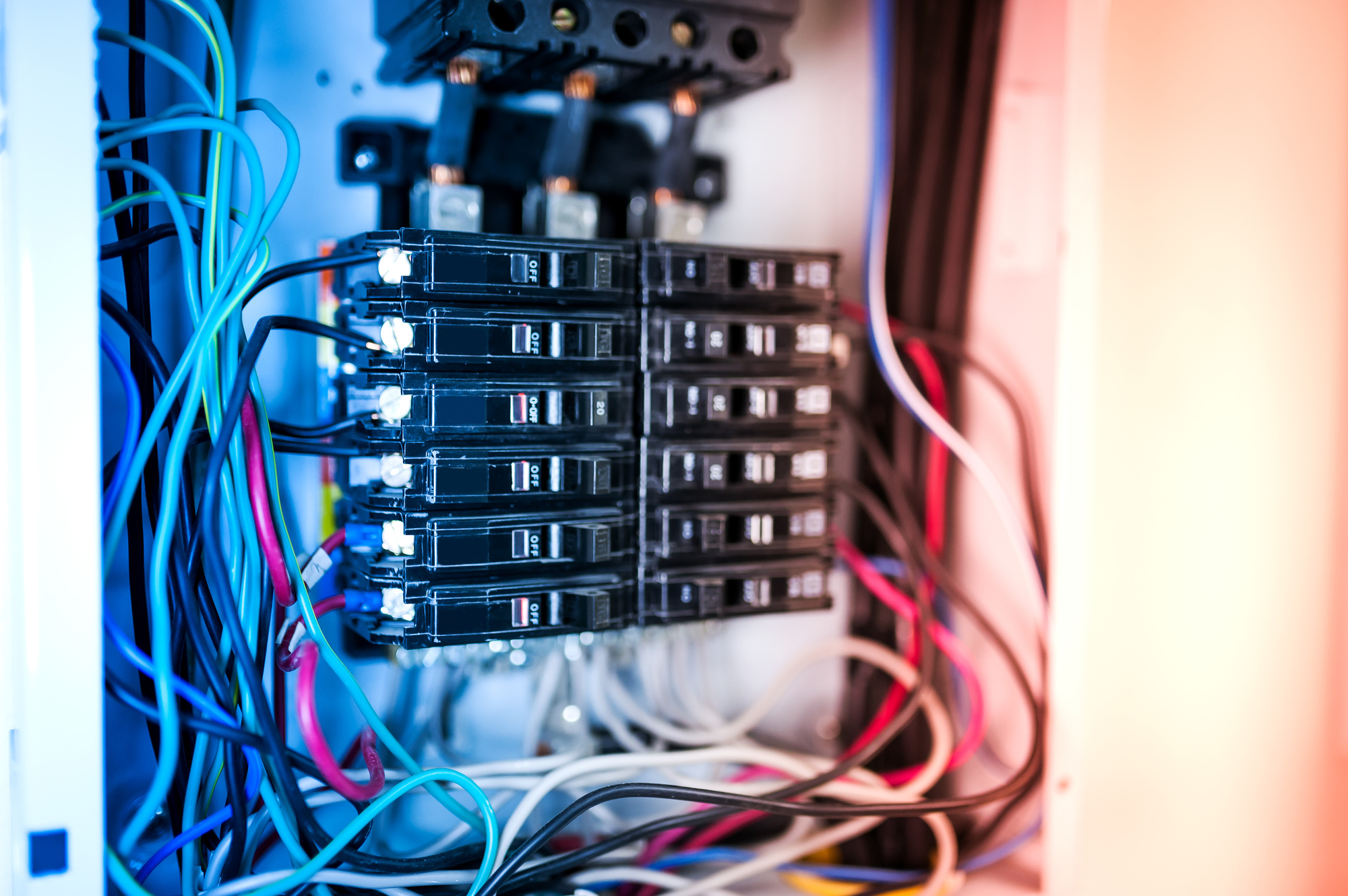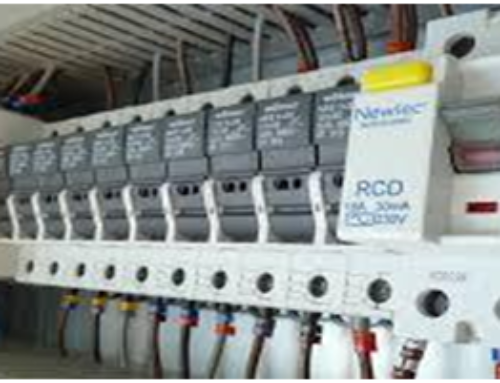Did you know that businesses lose billions when their operations become stalled? An automatic transfer switch is essentially what keeps your power grid running and reliable. From your primary supply to your backup or standby supply, automatic transfer switches can ensure you don’t have to do anything manually.
An Automatic Transfer Switch not only provides backup power but also increases the efficiency of power usage. It does so by reducing the strain on your primary source of energy so that you don’t suffer from an outage again. A transfer switch is what’s responsible for the connection of your utility power and your generator power.
It’s like a lifeline to your equipment and anything that you need that ultimately relies on power. To find out what the exact function of an ATS is and why it’s needed, keep reading.
Table of Contents
What Are Automatic Transfer Switches?
An automatic transfer switch is a device that allows you to automatically transfer power from your utility power to your generator power. This happens when your utility power fails, you can create a “fail-safe” condition and divert power from your generator to your home. An ATS panel is primarily used in industrial space, commercial buildings, and data centers in many cases.
The transfer switch acts as a safety precaution during an outage. This happens because it directs the flow of power from your backup source to your critical circuits.
The main point of this tool is to switch between two sources of power. This means that it’s capable of splitting your power supply across the power grid.
An automatic switch is constantly monitoring your power sources and the difference is that your standby generator can switch on by itself with no manual interference. During a power outage, this comes in handy because businesses can lose a significant amount of money when their operational line does out due to power issues.
Each year, power outages, on average cost around $150 billion. This is why it’s important to integrate an automatic switch option into industrial equipment applications.
Understanding the Difference Between the Two
Manual and automatic are the two types of transfer switches you’ll notice. Manual switches require an operator.
The operator is in charge of selecting the flow of power from your primary power source to your backup source. This switch is only useful in situations where the power grid is down and a backup source of power’s needed.
The downfall is that you will have to flip the switch yourself. This requires manual application and isn’t the most efficient option. An automatic transfer switch is a switch that redirects power from a primary source to a backup source operates in the same way but it’s an automatic process and doesn’t require any external manipulation.
How Does an Automatic Transfer Switch Work Exactly?
The way types of ATS systems work is by having the automatic transfer switch installed at the entry area where your power starts or enters your property. The basic idea is that when you lose power, the ATS kicks on the generator. An automatic transfer switch has two basic parts; the transfer switch and the control panel.
The transfer switch is the actual switch that transfers the power from one source to another. The control panel is a computerized system that monitors utility power and a backup generator.
When there is a power outage and your primary source of power is down, the transfer switch senses this and is automatic as it routes power from your backup source to your critical circuits. The control panel monitors a few things.
It monitors any AC main supply that your system has coming in. This type of monitoring allows for accurate and timely energy switching. Whenever power is restored the automatic switch will send the power transferred to the standby generator back to the main source of power.
The backup generator will then turn off. The process is meant to be automatic which is how the hub of the switch was designed.
The Four Main Types of Automatic Control Systems
There are four main types of automatic control systems. Let’s take a look at them to see how they operate. The 4 main types of automatic control panels are;
Two-Position Controllers
This type of controller is the most basic type of automatic control panel. It has two positions: on and off. This controller’s used for simple applications that do not require any type of sophisticated switching.
This piece of equipment will consist of a valve and that valve will be open or it will be closed. What this means is that the control element can only be in one of two positions when being used.
Derivative Controllers
This type of controller gives out a response when there is an error signal. This applies to changing error signals but not to error signals that are constant. Derivative control is what would allow controllers to have a higher level of control when there is a constant error occurring.
Integral Controllers
Another word for this is, reset control. This type of ATS comes in handy when there is a large amount of an offset in power.
This point of control is used with more proportional control. It simply means that the power output is proportioned to the input of power
Proportional Controllers
A proportional controller is more linear and acts as a control system for systematic feedback. It’s a control loop controller that is used across the industrial space. Its main purpose is to help with calculating error values.
Benefits of Installing an Automatic Transfer Switch
Automatic transfer switches provide peace of mind during power outages. They help to monitor power interruptions. This helps to keep track of delays in power and operation.
This is helpful during storms, accidents, or general power issues during industrial applications. Automatic Transfer Switches ensure that power’s routed to necessary parts of the power grid. They can also ensure that a generator is being used efficiently and that it appropriately distributes power.
Some of the main benefits that you can expect are;
- No need to tend to the system
- An on-site operator isn’t necessary
- Little to no loss in revenue if you’re at risk for blackouts
- Power restoration in only seconds in most cases
Adding in an automated transfer switch allows for a few things. The main point is fast power roll over as soon as the local power lines and power supply are off-grid.
The manufacturing industry alone loses around $6.45 million for every hour that they are in downtime. This is one of the main reasons that an ATS Panel is widely used across various industries.
Why Is an Automatic Transfer Switch Needed?
An automatic transfer switch is needed to transfer power from the backup source to your primary source. This happens when there is a power outage and your primary source fails. With diesel air compressors, they can be for starting or stopping the operations of your diesel generator.
It saves the user time in the event of system failure due to a power interruption. It’s also a way to provide an adequate approach to power usage.
Are There Alternatives to an Automatic Power Switch?
While an Automatic Transfer Switch panel is often the better choice for industrial applications, there may be a few alternatives. While one may be less efficient and the other less limited, what you decide to have installed should be based on what you need and the level of efficiency you hope to achieve.
Manual Changeover Switches
While cheaper, they are also less efficient. The difference is that you will have to monitor your power and respond during any delays or outages. You’d be switching from the main power to your generator on your own instead of the system doing it for you.
Interlock Kits
An interlock kit might contain fewer features but it does allow for expansion of the way your power can run. A simple transfer switch is only for use for a certain number of circuits. An interlocking kit makes it possible to run generator power to about any other circuit installed into your electric panel.
The Right Solutions Make a Difference
Automatic transfer switches are often used for large jobs to simplify power usage and ensure streamlined project management in the case of outages. Working with industrial equipment and staying on top of innovations in the field may sometimes require more support than you can give it on your own.
Work with Swift Equipment Solutions to get reliable support for any of your industrial equipment needs. We’re made up of a team of experts and strive to help those that need it. Get in touch with us today so we can discuss your project.




Leave A Comment